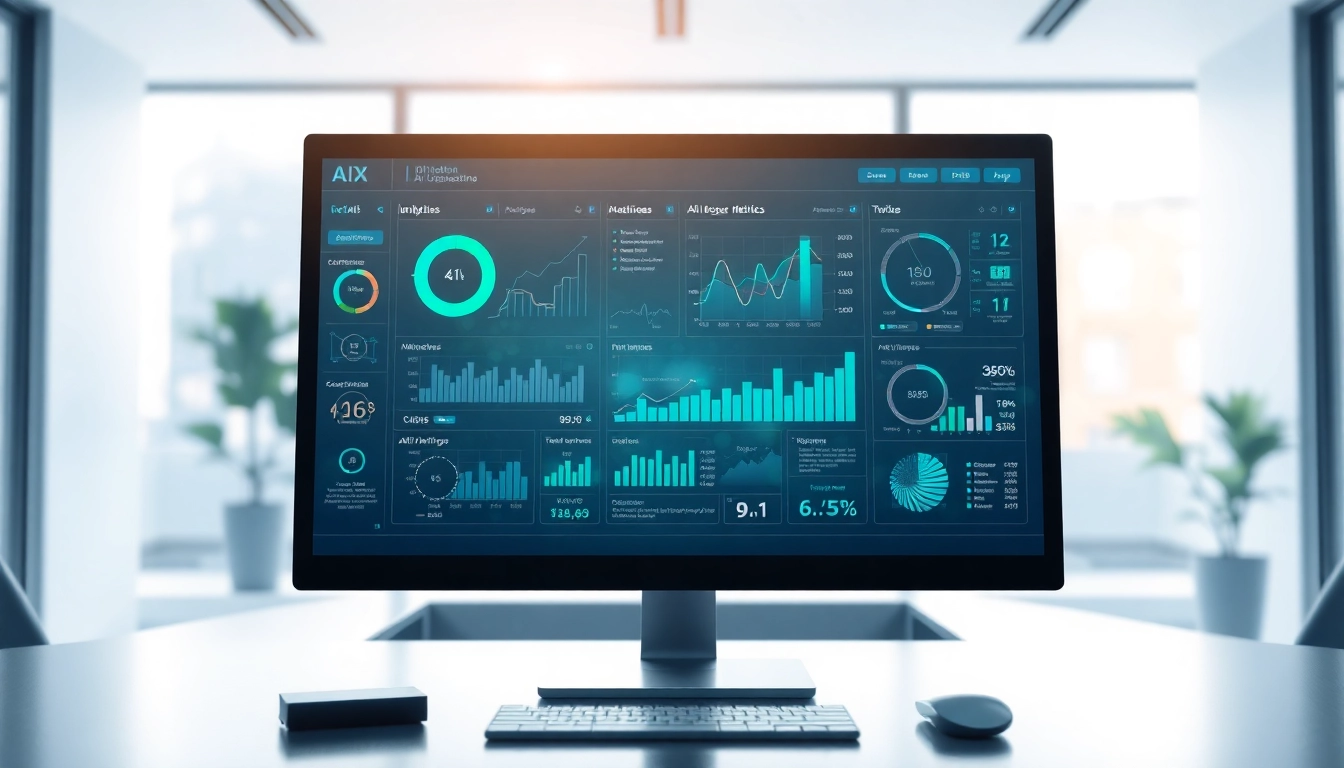Understanding the AI Checker Landscape
In the age of digital content creation, the integrity of textual outputs is paramount. With the rapid development of artificial intelligence, content generated by machines is becoming increasingly prevalent. Consequently, tools known as ai checkers have emerged to help discern human-generated text from that created by AI algorithms. In this article, we’ll delve deep into the world of AI checkers, examining their function, importance, and the factors to consider when selecting one that meets your needs.
What is an AI Checker?
An AI checker is a specialized software tool designed to analyze textual content and determine whether it was written by a human or generated by an artificial intelligence model. These tools are vital for various applications, including academic integrity, content originality checking, and quality control in professional writing. AI checkers utilize advanced algorithms to assess the linguistic patterns, structure, and characteristics of the text, providing users with insights about its origin.
Types of AI Checkers Available
The market offers a variety of AI checkers catering to different needs and functionalities:
- Content Authenticity Checkers: Tools that verify the originality and source of the text.
- Plagiarism Checkers: These identify copied content from published works, ensuring that the submitted material is original.
- Grammar and Style Checkers: While primarily designed for improving writing, some have features to detect AI-generated text.
- Comprehensive AI Detectors: These tools not only analyze the text but also provide suggestions for humanizing AI-generated content, improving readability and engagement.
Key Features to Look For
When selecting an AI checker, several features can enhance its effectiveness:
- Accuracy: The tool should be able to deliver reliable results with minimal false positives.
- User-Friendly Interface: An intuitive design can facilitate smoother interactions and quicker results.
- Real-Time Analysis: The ability to process content and provide feedback instantly is a significant advantage for users in need of quick turnarounds.
- Multi-Platform Compatibility: Ideally, the checker should function across various devices and operating systems.
- Data Security: The tool should ensure users’ privacy by securely handling the uploaded content.
The Importance of AI Checkers in Modern Content Creation
As AI technology evolves, so does the necessity for mechanisms ensuring authenticity and credibility in written content. AI checkers play a pivotal role in this landscape.
Maintaining Content Authenticity
In academic and professional arenas, the authenticity of written work is crucial. AI checkers help uphold these standards by identifying portions of text generated by AI, preventing issues related to originality. Institutions and organizations increasingly rely on these tools to preserve the integrity of their content, ensuring that the quality of submissions meets ethical guidelines.
Impacts on Academic Integrity
The rise of AI-generated content poses significant challenges for educational institutions. AI checkers can detect assignments and papers generated by bots, fostering a culture of academic honesty. By utilizing these tools, educators can discourage plagiarism and ensure that students engage with learning material meaningfully.
Benefits of Using AI Checkers for Businesses
Businesses operating in content-driven sectors can significantly benefit from AI checkers. Ensuring the originality of marketing materials, social media posts, and reports not only protects brand reputation but also enhances consumer trust. Moreover, these tools minimize time spent on content revisions by swiftly identifying areas that require human touch-ups.
How AI Checkers Work: A Deep Dive
The operational mechanics behind AI checkers involve sophisticated algorithms and modeling techniques.
Technological Fundamentals of AI Detection
Most AI detectors analyze text through natural language processing (NLP) techniques. These methods involve breaking down the structure of the text (like syntax and semantics) to evaluate its composition. Some advanced checkers utilize machine learning models that have been trained on large datasets of both human and AI-written text, allowing for nuanced differentiation between the two.
Common Algorithms Used in AI Checkers
Various algorithms are employed in AI detection, each with its strengths and weaknesses:
- Neural Networks: These models can recognize complex patterns in data, making them well-suited for distinguishing AI-generated text.
- Naive Bayes Classifiers: This statistical algorithm computes the probability of text being AI-generated based on previously seen examples.
- Support Vector Machines (SVM): These models create boundaries within the data to classify whether text belongs to the human or AI category.
Limitations and Challenges of AI Detection
While AI checkers are valuable tools, they are not infallible. Challenges include:
- False Positives and Negatives: No detector is perfect; they may identify human-written text as AI-generated or vice versa.
- Adaptability of AI Models: As AI writing tools evolve, so too must detection methods keep pace, potentially lagging behind new AI capabilities.
- Contextual Understanding: AI checkers may struggle with texts that rely heavily on context or subtext, which can lead to inaccurate assessments.
Choosing the Right AI Checker for Your Needs
Finding an AI checker that suits your specific needs involves careful consideration and comparison of available options.
Comparative Analysis of Top AI Checkers
Several products dominate the AI checker market, each with unique features:
| Tool Name | Key Features | Best for |
|---|---|---|
| ZeroGPT | Multi-stage methodology, supports ChatGPT, GPT-4, and Gemini | Wide-ranging AI content detection |
| QuillBot | Free detector, accurate identification of ChatGPT content | Students and casual users |
| Grammarly | No sign-up needed, good for integrated corrections | General writing improvements |
| GPTZero | Advanced detection methods, widely covered in media | Academic integrity checks |
| Scribbr | Text analysis for popular AI tools | Academic and professional publishing |
User Reviews and Experiences
User feedback can significantly influence your choice of AI checker. Consider seeking out reviews and testimonials to gauge performance, customer support, and overall satisfaction with the tool. Engaging with online forums or communities can provide additional insights into users’ experiences and the best-performing software.
Cost-Benefit Analysis of AI Checkers
The pricing of AI checkers varies widely based on their features and functionalities. Some are entirely free, while others may require a subscription for full access to premium features:
- Free Tools: Best for casual users or those needing minimal checking services.
- Subscription-Based Services: These typically offer comprehensive features, including bulk checks and deeper insights, making them suitable for businesses or academics.
When evaluating costs, consider potential ROI through time saved and quality improved in your content creation process.
Future Trends in AI Checking Technology
The evolving digital landscape continues to shape the future of AI checking technologies.
Innovations on the Horizon
Emerging technologies such as artificial intelligence and machine learning are likely to enhance the capabilities of AI checkers significantly. We can expect:
- Increased Precision: As algorithms improve, the accuracy of AI detection tools will also likely enhance, leading to fewer errors in assessments.
- Integration with Other Tools: We may see AI checkers integrated into various content generation platforms, enabling real-time feedback during the writing process.
- Enhanced User Interfaces: Improvements in design and usability will make these tools more accessible, even for non-technical users.
The Role of AI Checkers in Evolving Digital Landscapes
As AI continues to proliferate across different sectors, the role of AI checkers will expand beyond mere detection. They will play a crucial part in shaping policies surrounding digital content use, copyright, and authenticity.
Adapting to Changes in AI Detection Standards
The increasing sophistication of AI models necessitates regular adaptations in detection standards. AI checkers will need to evolve in tandem with these technologies to ensure their ongoing effectiveness and credibility. Continuous advances in machine learning will provide a foundation for developing cutting-edge options.
In conclusion, AI checkers are indispensable tools in the modern digital environment, ensuring the integrity and authenticity of text across various applications. By choosing the right AI checker, businesses, educators, and content creators can enhance the reliability and quality of their work while navigating the complexities of an increasingly AI-driven world.



